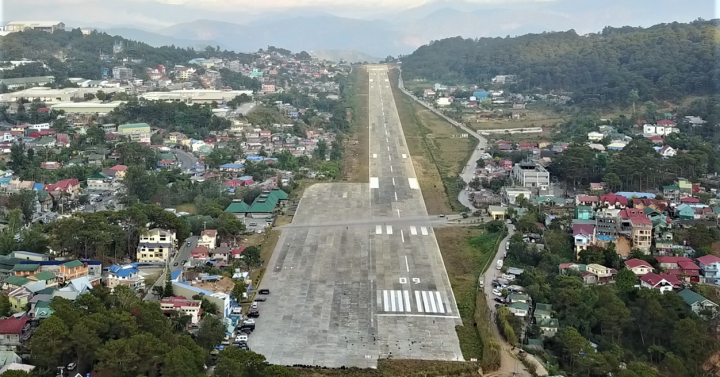30 August 2022
The Department of Transportation (DOTR) is earmarking ₱68 million for rehabilitation of Loakan airport terminal as it prepares itself to accommodate commercial traffic next year.
Director General Capt. Manuel Antonio Lara Tamayo of the Civil Aviation Authority of the Philippines (CAAP) disclosed over the weekend that Baguio airport is in bad shape and too small to accommodate passenger traffic on the biggest turboprop airline intends to operate.
"The biggest plane it used to received was the Fokker 50 which is a 50 seater plane. Nowadays, airlines used a 80-90 seater plane," says Tamayo.
PAL earlier manifested intent to fly Manila-Loakan 5 times a week should airport reopens to the public using Q400 aircraft.
The Director General said the current passenger terminal cannot handle that number of people.
"And that is not the end of the problem for Loakan. We still have to contend with other airport facilities, such as navigation, drainage, runway safe areas, and the weather which could be problem for airlines," Tamayo adds.
CAAP is looking to extend the length of the runway by at least 100 meters from the present 1,683 meters, and clear natural and man made obstructions along the airside.
"Its a safety concern. It would not be a problem if a small plane is used. But airline operators got bigger planes now." says the CAAP head.
At least 35 natural obstructions were listed by the air regulator as plane hazard that needs to be removed within the airport premises. CAAP also needs to install new drainage and repair clogged drains costing another ₱20 million, caused by typhoon in 2018.
Baguio Mayor Benjamin Magalong earlier discussed with Transport Secretary Jaime J. Bautista on residents
encroachment to airport premises affecting commercial airport operations, and the City executive has promised to remove and demolish building structures obstructing the airport to restart commercial operations.
“There are at least 300 houses located within the buffer zone. We need
to deal with the illegal structures within the airport reservation now if we want to open the airport,”
Magalong said.
According to the City of Baguio, more than a hundred individuals have been given notices to vacate by the city government since 2020 that they are within the buffer zone, and more than half of them have left already paving the City to demolish structures. The rest of the houses are still there.
Magalong said, houses and other structures
obstructing its buffer zone will need to be removed and human activities such as
walking or crossing on the runway will no longer be allowed.
The City mayor also said they may have to re-align the access road to widen the clear area.
CAAP safety regulation requires a commercial airport runway to have a clear area of 150-meter width which Loakan fails due to terrain issues.
Usually the airport regulator issues special operating conditions reducing the clear area to 80 meters for the airport, taking into account natural obstructions on both sides as the buffer zone, but this safe zone was already invaded by residents.
"We have to remove this obstruction before we allow airlines to operate," says Tamayo.
Loakan Airport is built by the Americans in 1934 and has served domestic flights until 1998 when PAL abandoned turboprop operations which used to operate at the airport regularly.
Small airline operators Seair and Asian Spirit managed to operate at the airport in the past after 1999 but was eventually plagued by airport closures due to weather conditions until commercial services terminated in 2012 due to low traffic conditions.
It eventually was closed for commercial traffic in 2014 after it failed to pass aviation security audit due to safety concerns amidst continuing encroachment to its runway safety area (RSA).
Currently, the airport only services chartered and military flights on demand.

No comments:
Post a Comment